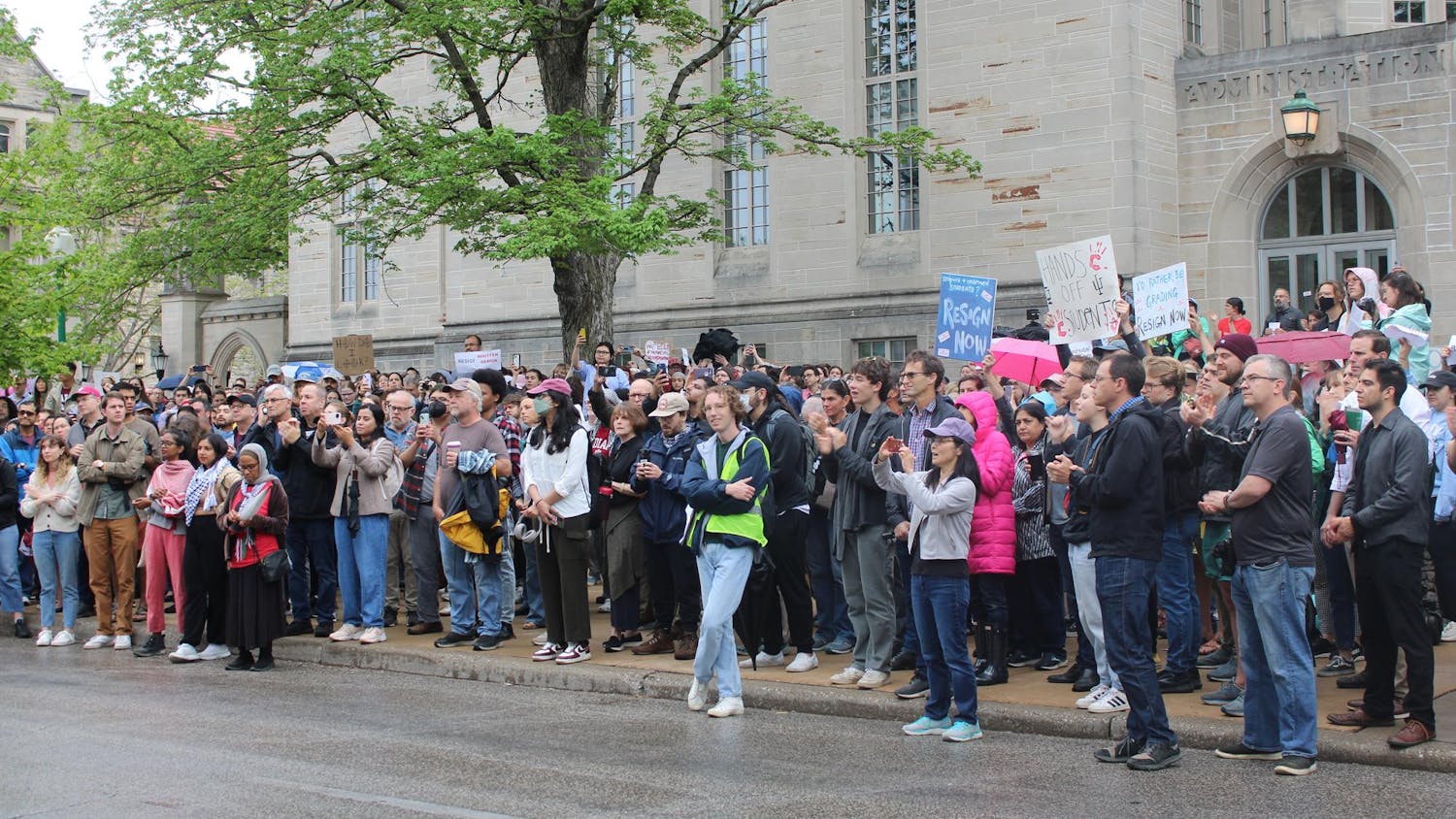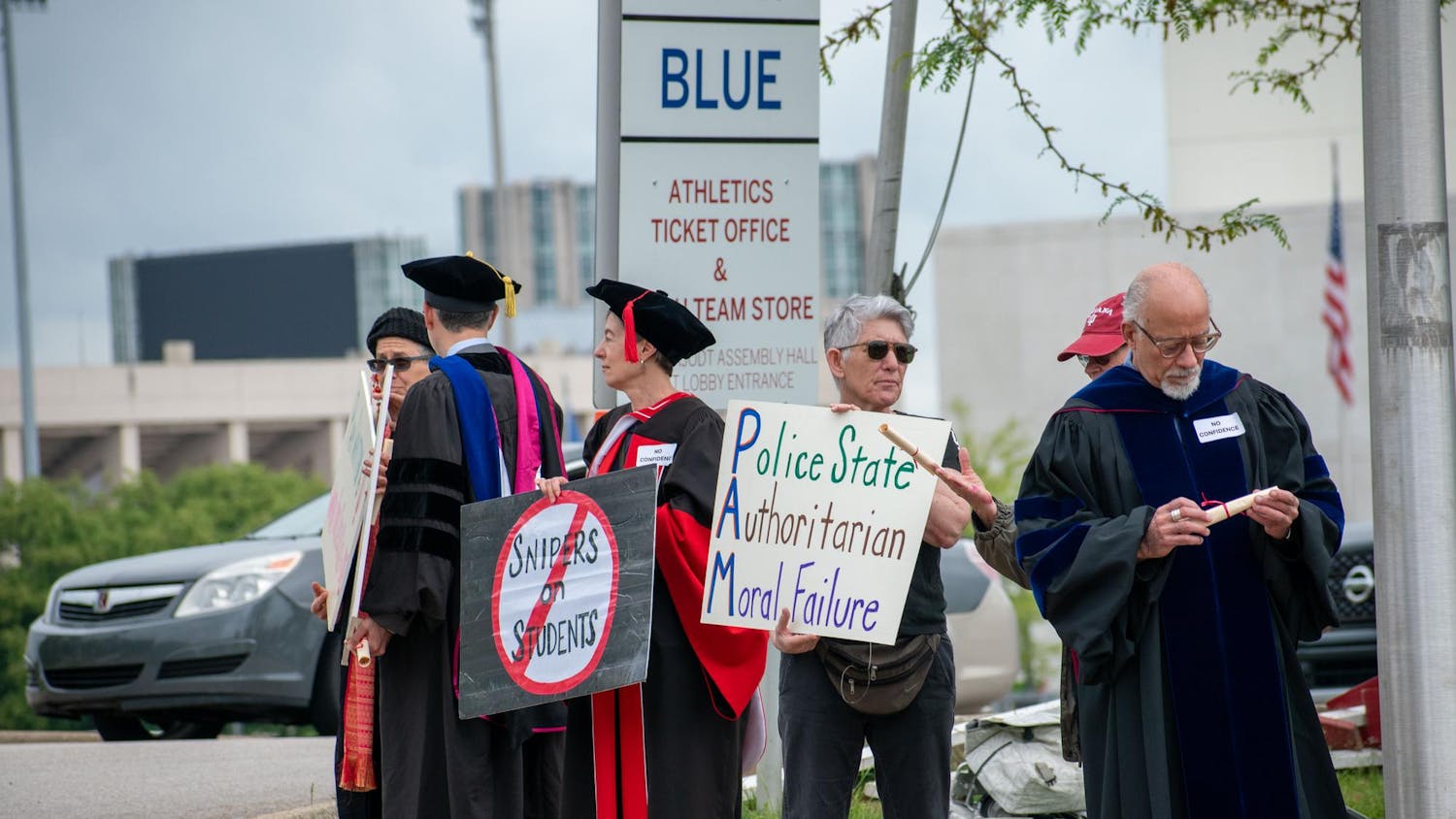Once an all-African-American school, then a community library and now a history center, the building that is situated between East Sixth Street and Washington Street has a story beyond the exhibits that fill its walls.
The Monroe County History Center, created by the 100-year-old Historical Society, is the product of community activism and stories that people thought needed to be told.
“We are here to tell the story of Monroe County and how we fit into Indiana and the history of the United States,” Erin Anderson, education and public programs manager at the center, said.
Center School occupied the site at East Sixth and Washington from 1854 to 1913. Originally used by white students, it became a school for African-American students in Bloomington in 1881.
In 1913, the Andrew Carnegie Corporation awarded a $31,000 grant to the Monroe County Library Board for the construction of a public library on the site. The corporation put a total of 82 libraries in the state as an effort to increase education.
In February 1918, the new Bloomington Public Library opened its doors to patrons. The building would serve the needs of county residents for the next 52 years until the current library opened its doors across the street.
The future of the old library remained uncertain until 1978, when The Old Library, Inc., a nonprofit organization, purchased the site from the city.
“There was such a community effort for the preservation of the building,” Anderson said. “There were even bumper stickers made that said ‘Save the old library.’”
One of the bumper stickers is currently on display in one of the rotating exhibits.
TOLI renovated the old building, and by 1980, other nonprofit organizations, such as the Bloomington Area Arts Council and the historical society, had leased space for their operations. In 1981, the Society’s Genealogy Library moved into the building.
In 1994, TOLI sold the building to the Monroe County Historical Society for $1. Following the Build History fundraising campaign, the Society added an additional 12,000 square feet to the old library building in 1997 and 1998.
The facility now has exhibit galleries of 8,000 square feet, an expanded genealogy and local history research library, a museum store and an education room.
“We have everything from fossils, to early Native American artifacts, to things found last week of significance,” Anderson said.
The mission of the society is to foster a deeper understanding and appreciation of Monroe County’s history, culture and natural environment by all.
To accomplish this purpose and mission, the MCHS collects, preserves, researches, interprets and exhibits the genealogy, history and artifacts of Monroe County, Indiana as well as research and interpret the relation of that County’s genealogy, history and artifacts to the State of Indiana and the United States.
There are always five permanent galleries focusing on workers, education, entertainment, pioneer life and transportation — all with a local focus.
“We are willing to display anything that brings back the connection of Monroe County,” Emily Musgrave, exhibits manager, said. “We both reach out to the community and people come to us with ideas on exhibits.”
Typically traveling exhibits stay for a three to four-month span, dependent of the size of the exhibit. One current exhibit on display is titled “The Ultimate Sacrifice.” This exhibit honors the fallen Hoosiers of the area, including Anderson’s father as the opening.
During the winter holiday season the history center partners with the city following the canopy of lights ceremony in downtown Bloomington. There is a party with donuts, cider and a holiday store available to the public.
“It’s my favorite time of year, and working here adds that historical magic, too,” exhibits manager Kaylee Witt said.
All employees of the center have been working for two years or less and most are under the age of 50.
“As one of the senior members of staff, we are always looking for ways to improve and engage the community,” Anderson said.
There are currently 30 interns at the center, and they said they are always looking for more, especially IU students. The values of the history center consist of education, collaboration, stewardship, respect, accessibility and leadership, Musgrave said.
There is at least one educational program monthly produced by the center, usually family-friendly.
“There’s lots of stories here that nobody realizes,” Anderson said. “Our purpose is to tell those stories.”



